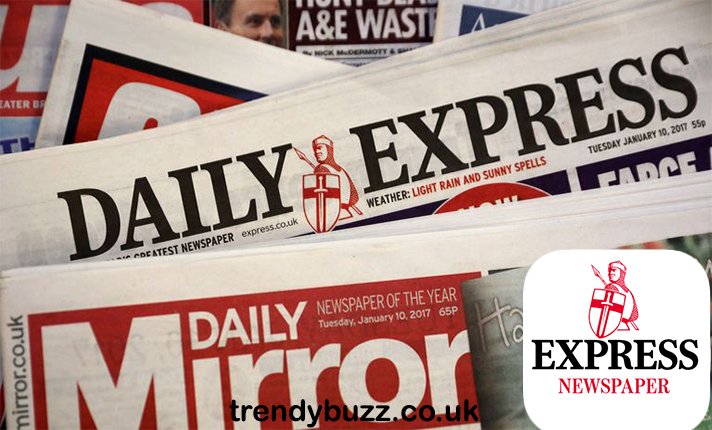Introduction
The name Daily Express belongs to two very different newspapers with linked ambitions: a British national tabloid that has shaped Fleet Street opinion for more than a century, and a Pakistani Urdu broadsheet launched in the late 1990s that quickly became one of the country’s widely read dailies. Both titles show how legacy news brands can adapt and survive in fast-changing media markets.
Origins and evolution: the UK Daily Express
The UK Daily Express began in 1900, founded by Sir Arthur Pearson, with the first issue published on 24 April 1900. Under the ownership of Lord Beaverbrook the title rose to massive popularity, pioneering a news-heavy front page and reaching record circulation figures in the 1930s and 1940s. Over time the paper moved to a tabloid format, went through several ownership changes, and is now part of Reach plc.
A distinct edition: Daily Express in Pakistan
A different Daily Express began publishing in Pakistan in 1998. Launched by Century Publications and owned by the Lakson Group, the Urdu Daily Express based itself in Lahore rather than the traditional hub of Karachi. That regional focus helped the paper grow quickly across Punjab and led to simultaneous editions from Islamabad, Karachi, Lahore, Peshawar, Quetta, Multan, Faisalabad, and other cities. The title complements English-language properties in the group and serves Urdu-speaking readers across provinces and both urban and smaller provincial markets.
What the two papers share
Despite different languages and markets, the two Daily Expresses share several editorial instincts. Both aim for broad readership with punchy headlines, prioritized local and national reporting, and a mix of politics, human interest, sport, and entertainment. Each has also invested in a digital presence to reach audiences beyond print subscribers, using websites and social channels to distribute content and drive engagement.
Ownership and corporate shifts
Ownership changes have shaped editorial direction and commercial strategy for both titles. In the UK, the Express titles were bought by Northern & Shell under Richard Desmond, and then acquired by Trinity Mirror, which rebranded to Reach plc in 2018. That consolidation folded the Express into one of Britain’s largest publishing groups and prompted changes in resource allocation and editorial oversight. In Pakistan, the Lakson Group continues to own and support Daily Express as part of its media portfolio.
Editorial stance and controversies
The UK Daily Express has taken clear political positions at moments in its history, and some of its editorial choices have provoked public criticism. Ownership changes sometimes prompted staff departures and shifts in tone. The title has faced discussion about the balance between campaigning journalism and responsible reporting. In Pakistan, Daily Express operates within a crowded and politically sensitive media environment where editorial choices also draw scrutiny and debate.
Business model and the digital pivot
Both Daily Express brands confront the common problem of declining print revenue and the need to build sustainable online income. Reach has pushed a digital-first strategy, consolidated some operations, and experimented with new digital editions and international initiatives. Pakistani publishers have likewise expanded multimedia coverage, video, and mobile-first formats to attract younger audiences. Balancing free content with membership or subscription models remains a central commercial dilemma.
Recent moves and experiments
Publishers have not been idle. Reach launched a US-focused edition of the Express in 2023 and has tested diverse digital formats to find stable revenue streams, including newsletters, branded content, and membership pilots. In Pakistan, Daily Express has continued expanding local editions and investing in regional reporting to hold an audience outside the main metropolitan markets. Those tactical moves are pragmatic responses to a changing attention economy and to tighter financial constraints.
Circulation, scale, and reach
Print circulation has fallen across the industry. The UK Daily Express now reports print circulation figures substantially lower than its mid-century peaks, while the brand’s combined digital audience can still be sizable across web and social channels. Turning clicks into consistent revenue, however, is difficult when advertising markets and referral traffic shift rapidly.
Newsroom pressures and staffing
Shrinking ad revenue and the cost of digital transformation have led to staff reductions and reshaped newsrooms. Reach undertook reorganizations and job cuts in recent years as it sought to control costs and pivot to digital priorities. Pakistani newsrooms face parallel pressures while trying to maintain regional bureaus and local reporting capacity. Those economic realities affect how deeply reporters can investigate and how much original local reporting gets produced.
Why the brand still matters
Both Daily Express titles retain commercial and cultural value because of name recognition and established reach. Older readers still turn to print editions, while digital audiences offer scale and influence. Advertisers and political actors continue to place value on titles with a clear editorial voice. The pressing task for owners is to convert that recognition into reliable income while protecting editorial credibility.
Looking ahead
The next decade will test whether legacy newspaper brands can transform into sustainable, digital-first news organisations. Readers expect fast, accurate reporting and formats suited to mobile consumption. Successful publishers will likely pair efficient operations with renewed investment in local reporting, multimedia storytelling, and clear editorial standards to maintain trust.
Conclusion
The two newspapers that share the Daily Express name offer complementary lessons. One is a century-old Fleet Street institution that has navigated ownership change and is adapting to digital realities. The other is a regionally rooted Urdu daily that used an unconventional distribution strategy to win readers and build national scale. Both underline the same problem: how to turn trusted names into viable, digital-first newsrooms that continue to deliver reporting the public can rely on.
Practical steps
Practical moves publishers can take include focusing on newsletters, targeted events, reader memberships, and local investigative beats that platforms cannot easily replicate. These steps will not erase all structural problems but are realistic ways to diversify revenue while strengthening reader trust. The coming years will separate titles that survive from those that rebuild an editorial future.
